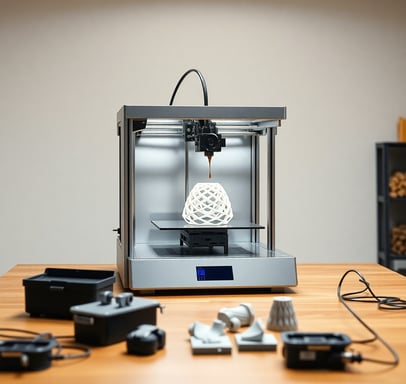Why 3D printing?
Is there room for me?
3/20/20251 min read


3D printing is changing the way we design, manufacture, and innovate. As technology advances, it will become even more affordable, efficient, and widely used, making it a key part of the future of manufacturing and a great business opportunity in an expanding market. 3D printing has become popular due to its versatility, affordability, and efficiency across various industries. Here are some key reasons why it's so widely used today:
1. Unlike traditional manufacturing, which relies on mass production, 3D printing allows for one-off custom designs. This is particularly valuable in industries like healthcare (custom prosthetics, dental implants), fashion (unique accessories), and consumer goods (custom phone cases, figurines, etc.).
2. Designers and businesses can quickly create products without expensive molds or tooling. This speeds up the design process reducing the time to market for new products. Don't have design skills yet, no problem. There are many great designers that offer their designs for free or licensed use. Once downloaded, just send them to your printer and your in business.
3. 3D printing eliminates the need for large-scale manufacturing setups, reducing costs for small businesses and startups. It minimizes waste, as only the necessary material is used, unlike traditional subtractive manufacturing.
4. The wide range of materials a 3D printer can use includes plastics, resins, metals, ceramics, and even biological materials (bioprinting for organs/tissues). Advanced materials like carbon fiber and metal powders allow for strong, durable, and lightweight components.
5. Accessibility, desktop 3D printers are now affordable, allowing hobbyists, small businesses, and students to create products from home. Open-source projects like RepRap and companies like Prusa have made 3D printing accessible to a global community.
6. Sustainability, 3D printing is an additive process (building up material layer by layer), which results in less waste compared to traditional subtractive methods (cutting from a larger block). Recycled plastics and biodegradable filaments (like PLA) are being used to make printing more sustainable.
